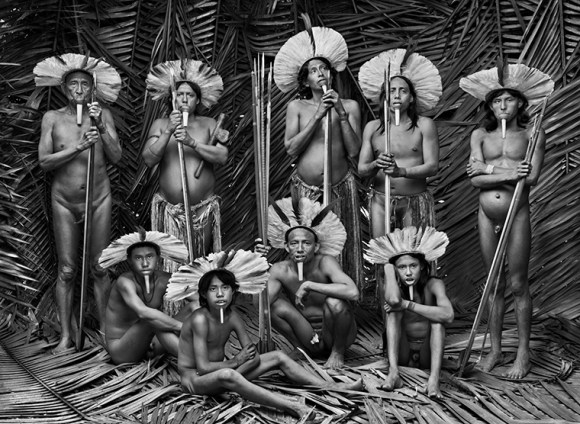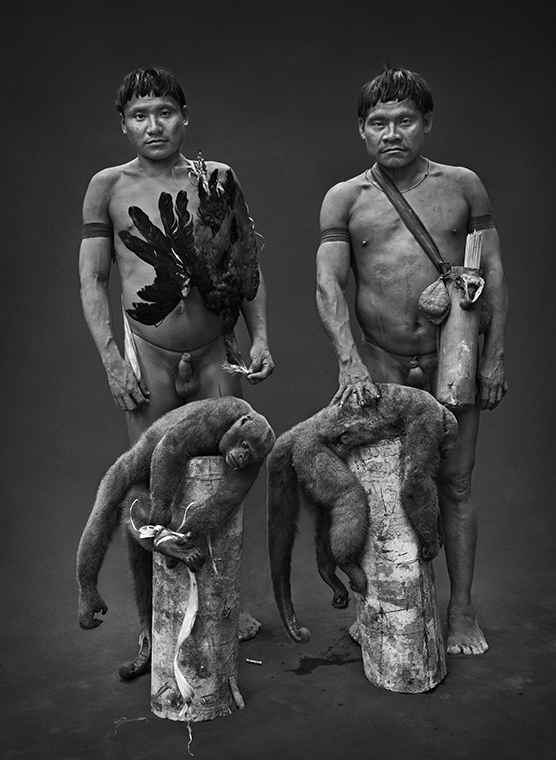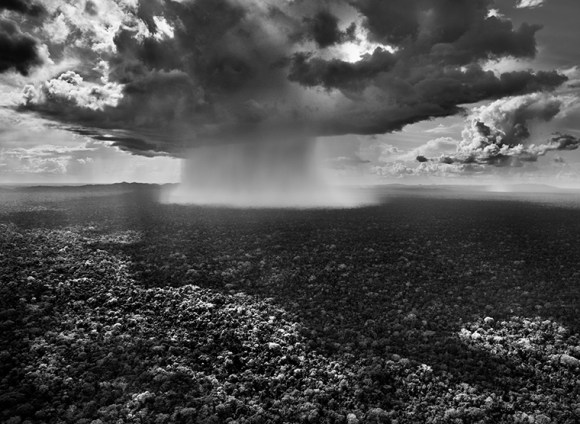- Brazilian photographer Sebastião Salgado traveled the Amazon for six years to capture nature and the people of the world’s largest rainforest, now depicted in his new book, Amazônia.
- Salgado, one of the most respected documentary photographers in the world, returned to the region four decades after gaining fame shooting the Serra Pelada gold mine and its thousands of mud-covered diggers.

Having photographed people and landscapes in more than 100 countries, Brazilian photographer Sebastião Salgado has returned to the country of his birth for his latest book, Amazônia, which is at once an ode to the beauty of the world’s largest rainforest and a cry for its preservation.
For six years, Salgado, now 77, traveled the Amazon to portray its trees, rivers, mountains, forests and people in his trademark black-and-white style in an attempt to capture the heart and soul of a region that for many people, both in and outside Brazil, remains the great unknown.
“For me, it is the last frontier, a mysterious universe of its own, where the immense power of nature can be felt as nowhere else on Earth,” Salgado writes in the foreword. “Here is a forest stretching to infinity that contains one-tenth of all living plant and animal species, the world’s largest single natural laboratory.”
Over more than 500 pages, Amazônia offers a wide mix of images, from aerial photography to intimate portraits, which, thanks to Salgado’s eye for light, drama and detail, turn into still lifes of a timeless quality.

So we see the Maiá River meandering through the land like a vein of silver, towering cloud formations like castles in the sky, and rainfall so heavy that, from afar, it looks like a massive pillar. People often forget that the Amazon evaporates so much water that it produces aerial rivers, which bring rain and life to people and lands thousands of miles away.
An important part of the book is dedicated to the lives, dances and rituals of a dozen Amazon tribes, including the Yanomami, Asháninka, Yawanawá, Zo’é, Korubo, Marubo and Awá, thus giving names and faces to people of the forest who, elsewhere, are all too often and too easily reduced to the rather anonymous “Indigenous.”
So we meet Ino Tamashavo, a young Marubo girl covered in necklaces made of white snail shells and holding up a baby bird, which she will raise as a pet, while hunters Pinu Vakwē Korubo and Xuxu Korubo pose behind two woolly monkeys, freshly shot with their blow guns.

Yara Asháninka and Bela Yawanawá are both young girls living in Acre state. But while the former wears only a few feathers in her hair and has modest designs painted on her face, which indicates she is not yet engaged, the latter has painted a black Zorro-like mask around her eyes and wears an enormous headpiece of feathers reaching to her waist.
40+ years photographing the world
Salgado was born in 1944 in Aimorés, in the southeast of Minas Gerais state. He obtained a degree in economics before traveling to Paris in 1969. His wife, Lélia Wanick, went on to study architecture, while he got a job at the International Coffee Council, which regularly took him to Africa.
It was there, with Lélia’s old Leica camera, that Salgado discovered his true passion: photography. Although already 33 by then, he decided to follow his heart, give up his job, and try to become a full-time photographer.
And with success. Within no time, he was snapping photos for agencies such as Gamma and Sygma and, in 1979, was invited to become a member of Magnum, the legendary photographers’ cooperative founded by the likes of Robert Capa and Henri Cartier-Bresson.
Salgado’s first books dealt with the African Sahel, Latin America and manual laborers of the world, yet he really shot to fame with a project set in the Amazon: Serra Pelada, the notorious mine where thousands upon thousands of mud-covered men descended into the belly of the earth on makeshift wooden ladders in search of a grain of gold.
In 2013, he published what is arguably his opus magnum: Genesis, the result of an eight-year journey to all corners of the globe to rediscover mountains, deserts and oceans, animals and people, that somehow escaped the claws of modern society and still show a glimpse of life as it, perhaps, once was.
As Salgado said of the book, “Some 46% of the planet is still as it was in the time of genesis. We must preserve what exists.” Amazônia was born and shot in the same vein as Genesis.

4 million trees planted in the family farm
Salgado is not religious. Yet, deeply convinced that all Earth’s creatures are equal, he is a humanist and environmentalist both in and outside his work.
About his 2004 portrait of a marine iguana in the Galápagos, he famously said: “Every movement in the arm of the iguana is the same that we have in our arm — I identify with the iguana as my cousin. All of us came from the same cells. In a moment it was possible to be an iguana and the iguana to be me.”
In 1998, he and Lélia returned to his father’s farm in Aimorés, a sleepy village of some 25,000 souls in Minas Gerais’s Doce River Valley. Like so many other people in the region, his father raised cattle. And as in so much of the region, years of overgrazing had heavily eroded what some 150 years ago was still a very green part of the Atlantic Forest.
It was Lélia’s idea to try bring the land back to its former glory. Thus the Instituto Terra was born. In 1999, they planted the first seeds of some 300 different tree species. Today, more than 4 million trees have been grown, half of which make up a forest that covers most of the Salgado family land. The other half was sold to generate income.
Visit Instituto Terra today and you’ll see lush vegetation, birds and water streams where just 23 years ago there was just barren land. While it’s encouraging to know that regeneration is possible, Salgado says he hopes it will never be needed for the Amazon.
“My wish, with all my heart, with all my energy, with all the passion I possess, is that in 50 years’ time this book will not resemble a record of a lost world,” he says of Amazônia, which he has dedicated to the Indigenous peoples of the rainforest. “Amazônia must live on.”
Banner image of the Marauiá mountain range in the Yanomami Indigenous Territory, in the state of Amazonas. Image by Sebastião Salgado.
This article was republished with permission from Mongabay. You can see their coverage here.
Note: This is the parent site of Mongabay, different from Mongabay-India.

